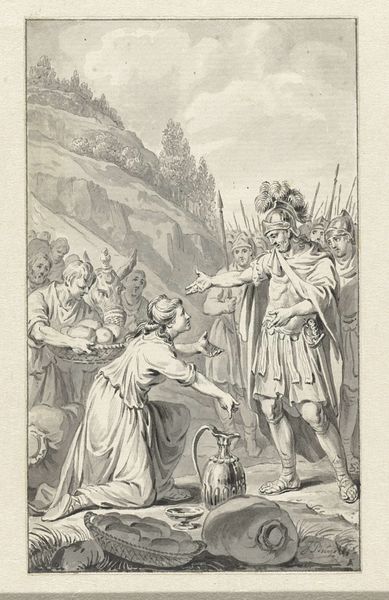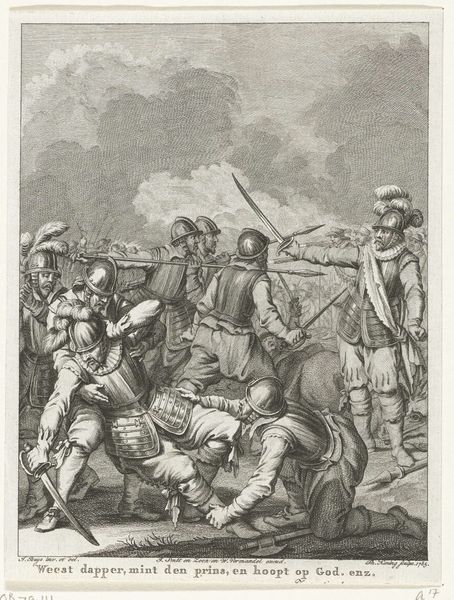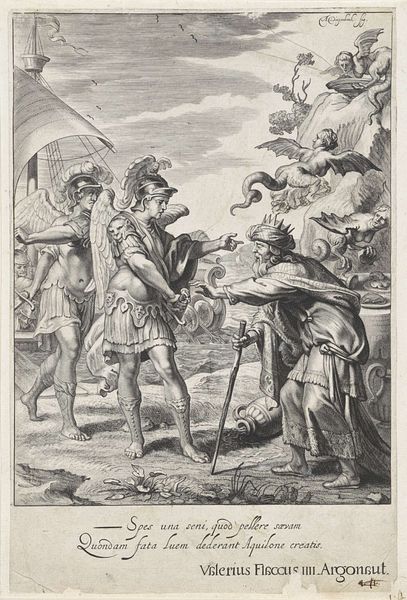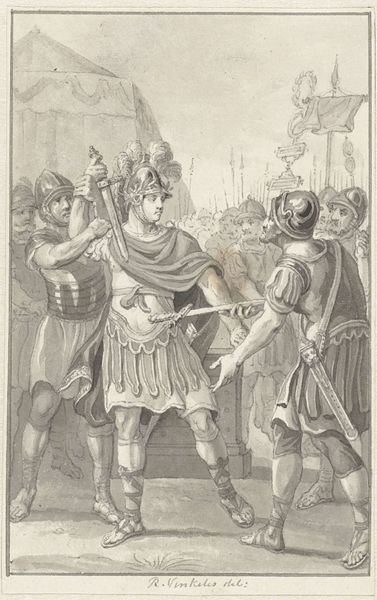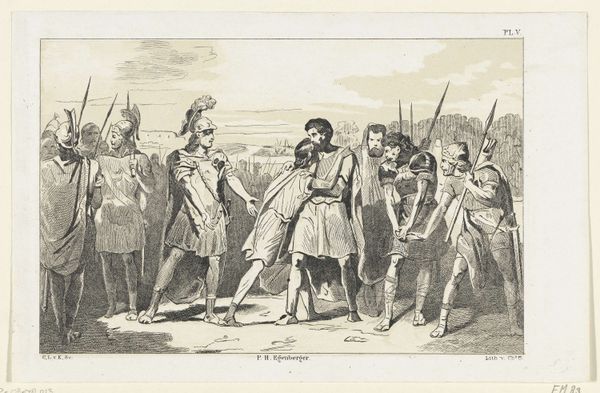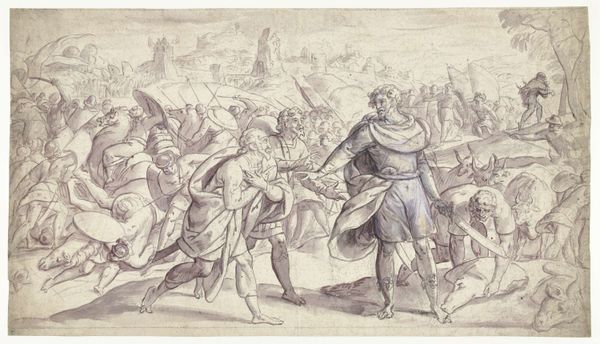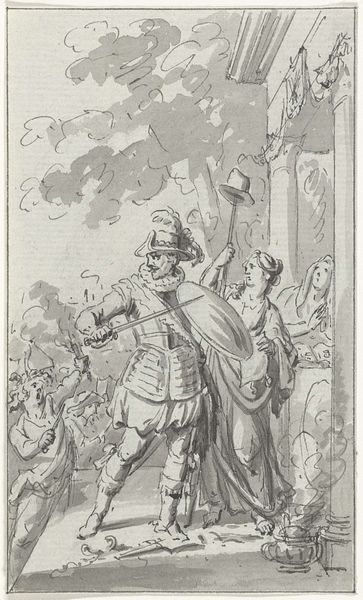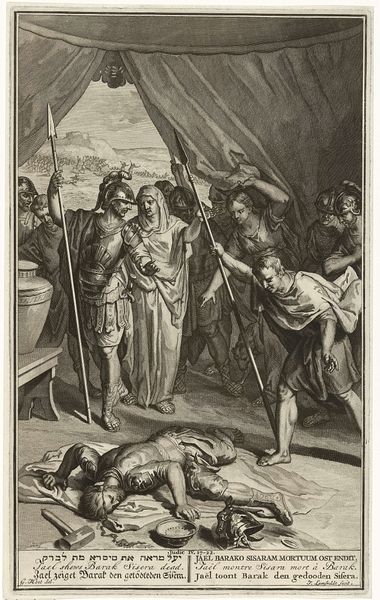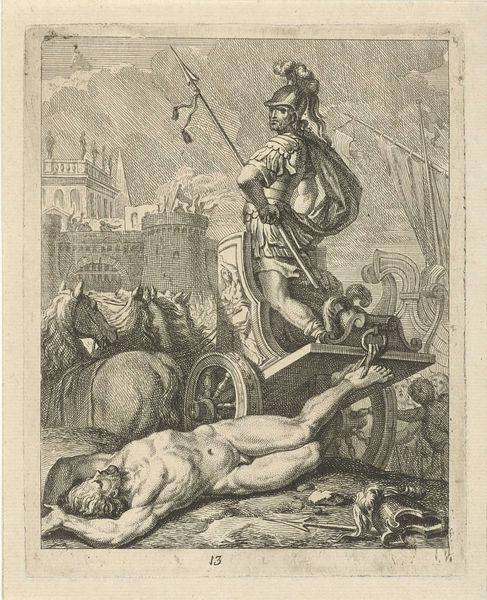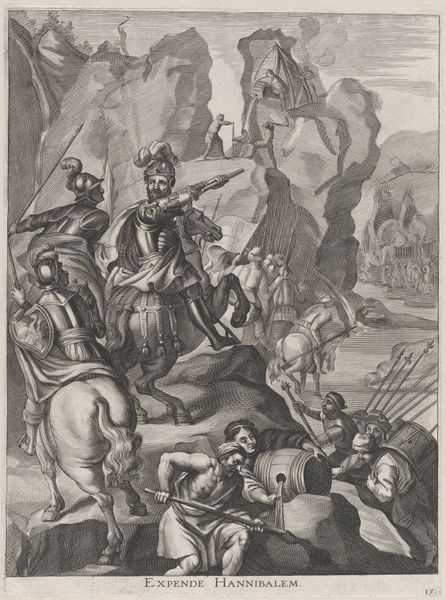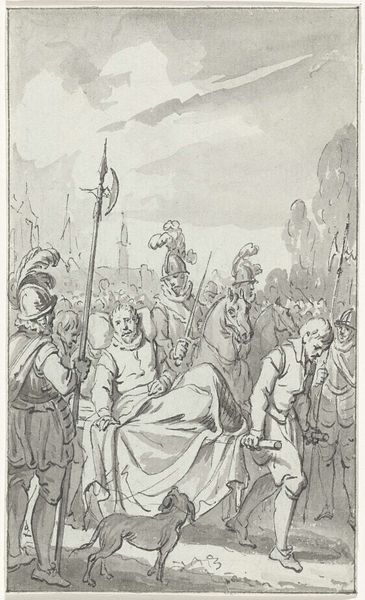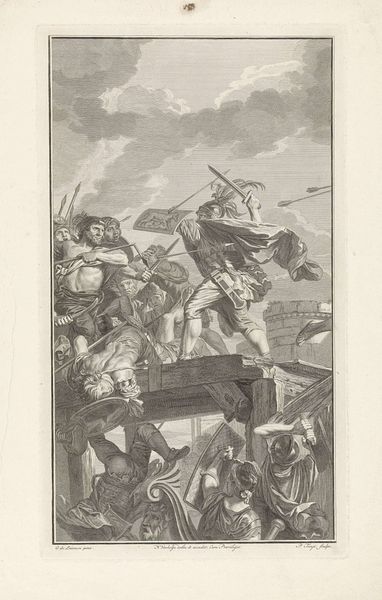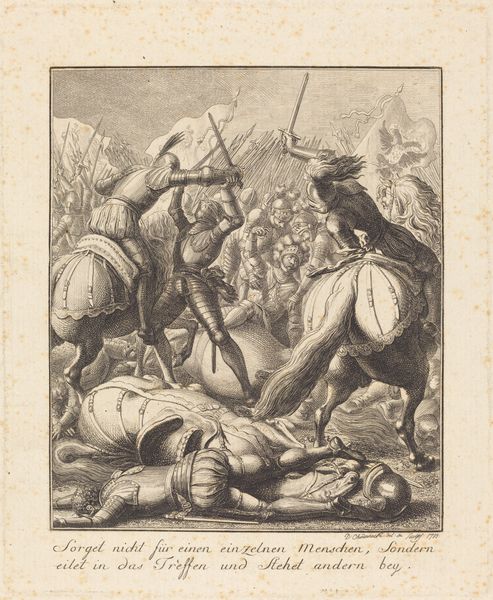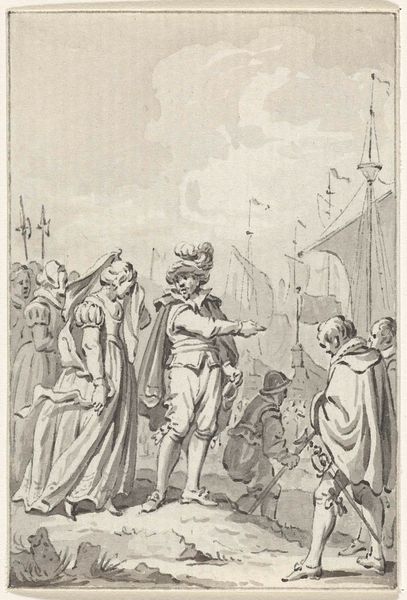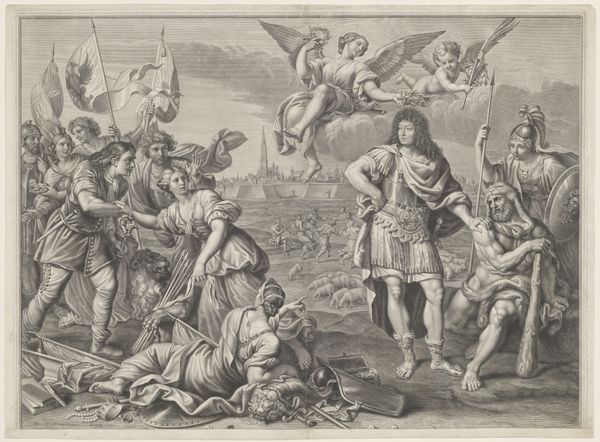
Dimensions: 256 mm (height) x 219 mm (width) (bladmaal)
Curator: Here we have Lorenz Frølich's "Uffe hin Spage," an illustration completed sometime between 1880 and 1908. It's rendered primarily in watercolor and drawing. Editor: Wow, the aftermath of a seriously uncool party, judging by the looks of that gold-clad dude. Is he… posing? There’s an awkward vibe to it, like he's waiting for the applause but just getting stunned silence. Curator: That pose isn't accidental. It embodies a key figure from Norse saga, often translated as "Uffe the Meek" or "Uffe the Timid," who ultimately proved to be a great hero. Editor: Timid? He's standing in what appears to be the leftovers of a battlefield—definitely a hero shot gone slightly sideways. And everyone else seems frozen in the background. I'm picking up an undercurrent of… melancholy, maybe? Is that intentional or just my projected feelings about existential dread? Curator: It’s an insightful interpretation. Frølich positions Uffe as this solitary figure embodying courage but amidst carnage and the mixed responses of his society. Romanticism certainly leaned towards portraying these introspective heroic moments against grand historical events. We might read this through a lens of understanding how leaders often emerge from traumatic conflicts, burdened by the aftermath despite victory. Editor: Trauma tourism! Only kidding—sort of. But seriously, look at the composition. The dead bodies framing Uffe's almost hesitant stance. I mean, dude’s literally touching his sword; it isn’t quite a Conan-esque swagger, right? It all hints at questioning glory itself. Maybe he’s asking himself, was this really worth it? Plus, the colors feel washed out like memory... fading grandeur, perhaps? Curator: Exactly. The genre-painting style, especially coupled with the historical subject, draws viewers to interrogate dominant narratives around heroism and masculinity prevalent at the time. The artwork offers more than a simple tale of victory. It provides layers about the internal battles fought alongside the external ones. Editor: Right, right, the double-edged sword—pun absolutely intended—of heroic achievements. I walk away from this thinking it's a bit less about celebrating triumphs and more about reflecting on the costs of everything. Makes that gold armor look… heavier somehow. Curator: Precisely, a reflective study that engages deeply with its historical contexts but prompts lasting resonance about conflict and leadership today.
Comments
No comments
Be the first to comment and join the conversation on the ultimate creative platform.
